Art commissions
A Salt Road exhibition and talk program for BC3, Basque Centre for Climate Change and IGS the International Glacial Society’s Ice in a Sustainable Society conference at Bizkaia Aretoa Centre, Bilbao, June 2022. With artists Dr Sally Payen, Jaime Jackson, Dr Neelambari Phalkey and Pearl Jackson-Payen.
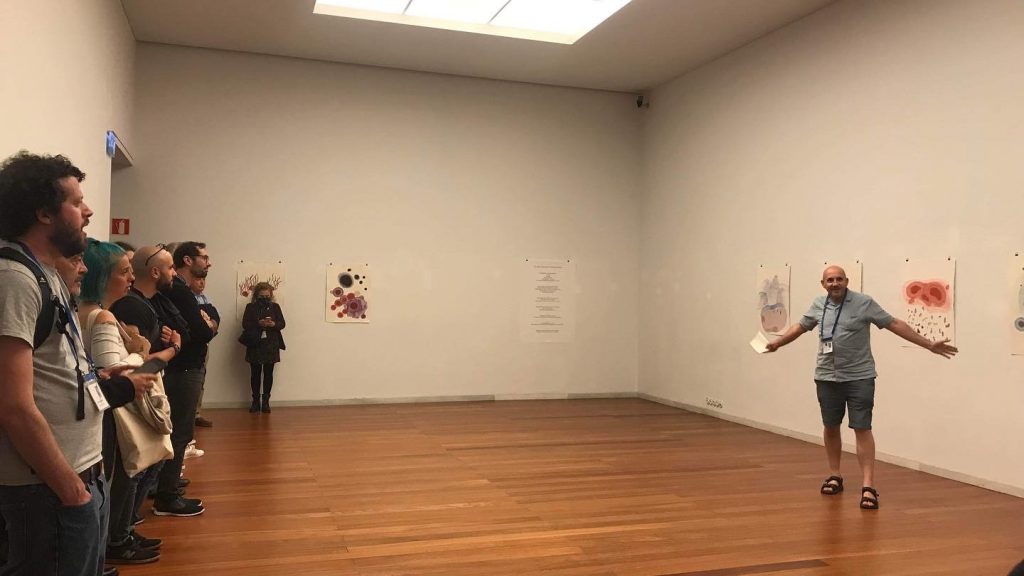
Dr Sally Payen – Ice works from the Hormonal Seas body of work
I had been talking to climate researchers at BC3 Bilbao, chiefly Sergio Henrique Fario, for a number of years. This is an account of the decision making process. To paint using water (or melted ice from the freezer) and watercolours instead of oil, seemed a good place to start and felt pragmatic in terms of speed of making and transporting the works to Bilbao from the UK. I initially decided to continue my thread of making work about plant forms with symbolic ecological significance, and was introduced to researchers at Black and Bloom who (please re-frame if necessary) aim to unravel how dark particles (black) and microbial processes (bloom) darken and accelerate the melting of the Greenland Ice Sheet. The blooms are red algae and are found on ice sheets in multiple icy environments – the ice has literally turned pink and in other places black or deep purple. I asked Martyn Tranter from Deep Purple for personal study photographs and he put me in contact with PhD student Laura Halbach – I received photos from both micro images of the bloom and also vast Greenland landscape views. I also asked Sergio Henrique Fario Ikerbasque Professor BC3 for some personal slides of his work.
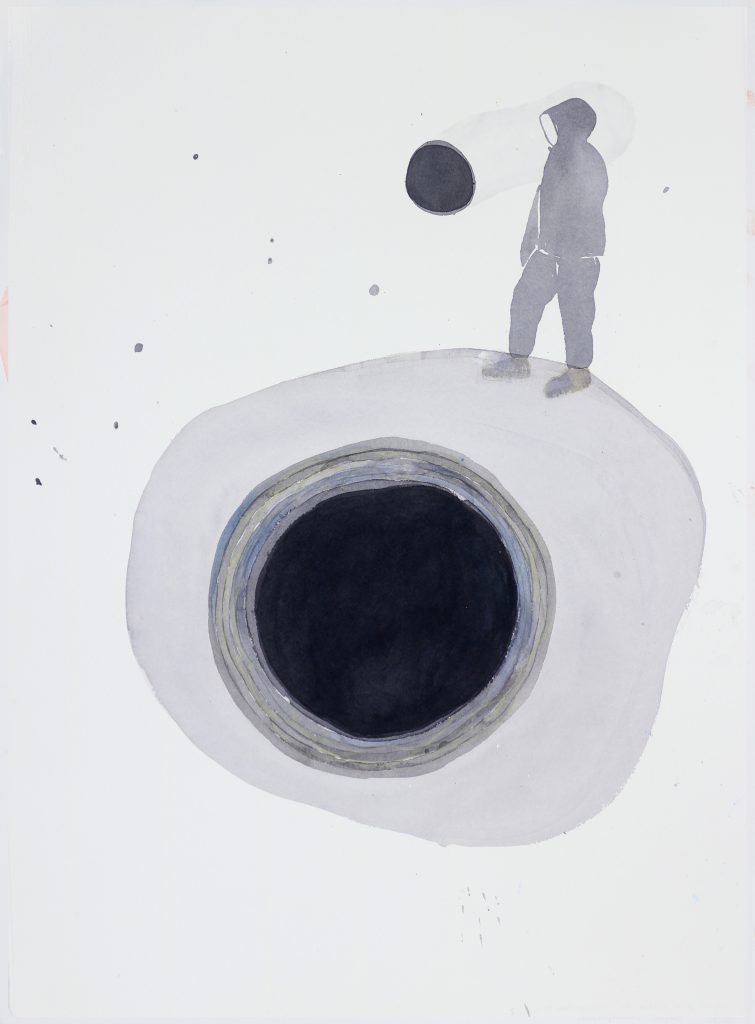
My process for this on-going body of work in essence came from the visual meaning I found in the places, shapes, and forms in the range of photographs I had gathered up. It was and is an intuitive process that initially included reading articles and getting a loose and potentially poetic understanding of the area. This had a great beginning with such visual research titles like Deep Purple and Black and Bloom, but once the work was emerging it became about revealing other ideas and most of all a journey toward a kind of visual truth. I began to realise that the scientists I had been talking to could also be sited in the work, as they seemed to have visionary inspired personalities, similar to some artists. I wanted people placed in some of the artworks as a kind of magnet, and it felt really important that this was personal and not random, hence I went back to Laura and Sergio with requests for more photographs of them out in the field. For me, it made the work much more real and tangible, and on reflection, this now feels like a personal desire to witness their efforts; that although each person in the watercolours is a symbolic scientist, it is also a particular person. I could add a particular person doing particular work on a particular day, but that wouldn’t be accurate as I created a new reality in the way I put together the different forms, shapes and colours in my final artworks. I don’t tend to copy nature in my work, I’m not really a plein air painter; I am more of a symbolic painter who connects forms and shapes to suggest something else. It’s kind of porous, an in-between space, and includes responding to particular issues in climate change, but also it is about what it means to be here, the human condition. I deliberately stop working on an artwork when I am left dangling in a mysterious place, yet at the same time in these particular works all the parts have come together.
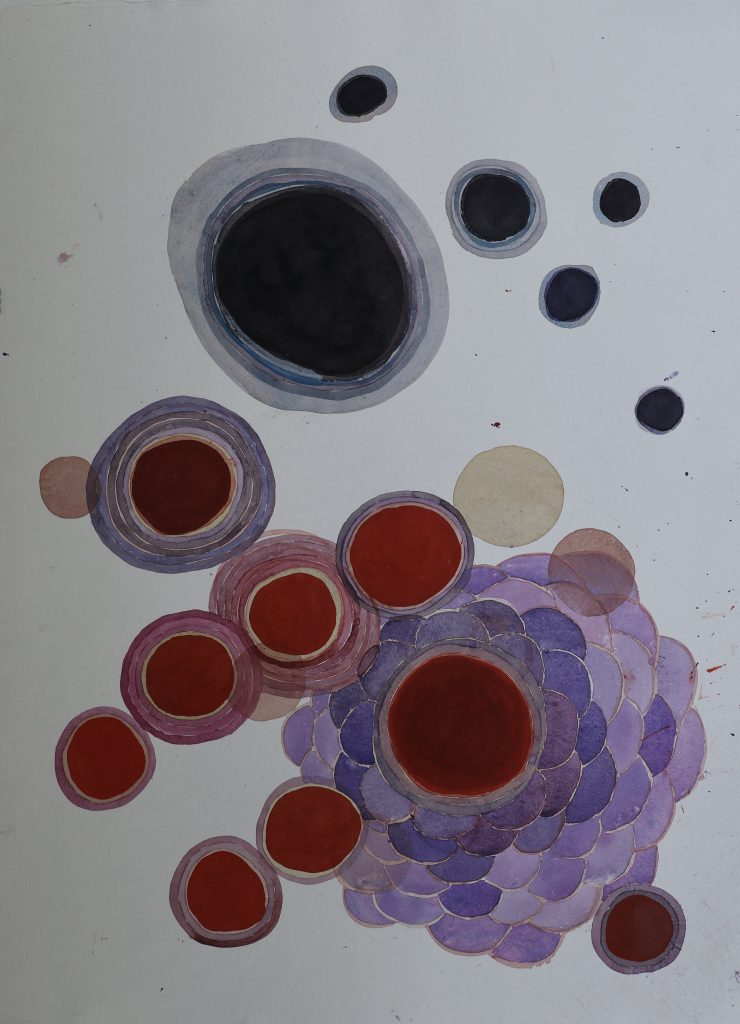
The titles are significant and have a clarity for me. The first piece I finished was Scientist contemplating the connectivity between pollution and black holes; In this work I was inspired by a photograph from Sergio of a Sherpa and PhD student at the foot of the Himalayas? In my work, the Sherpa made a great mysterious shape, seemingly enveloped in a snow storm. I wanted the universe of the painting to be coming out of the person, and I wanted to connect the black holes in the ice with a more cosmic outer space feel. Another title Scientist contemplating ice bubbles and the dark sky is exploring a similar micro yet cosmic space. My personal favourite is Macro/Micro, as I feel that there are new potential directions for me to explore. An artwork finally feels finished when an audience receives it and finds new meanings, which is what happened in the Ice in a Sustainable Society Symposium, the insights from the scientists themselves added new dimensions and reminded me of the importance of trusting liminality.
Jaime Jackson – A polyphonic response
Polyphony is a type of musical texture consisting of two or more simultaneous lines of independent melody, as opposed to a musical texture with just one voice.
Polyphony, as a form of relational (kinship) co-produced art practice, offers a decolonised approach to the cryosphere. Polyphony means abandoning individualistic approaches. The human separation of self from nature has caused the climate crisis, and we can’t hope to heal using the same type of communication. If we impose our view of a dominating self onto nature, we can never understand or work with it. Nature operates in a non-binary way. In order to share scientific knowledge with society, I needed to create a speculative space of nature in my work, where there could be a new way of communicating.
In nature, as in relational art practice, there is no leader ‘...although each is free to wander, their wanderings can’t be seen as separate from the others. There is no main voice. There is no lead tune. There is no central planning. Nonetheless, a form emerges’ (Sheldrake 2021).
When art and science come together in this way, multiple stories are woven, a musical texture is created, our attention has to become softened and more distributed.
‘The many songs coalesce to make one song that doesn’t exist in any one of the voices alone. It is an emergent song that I can’t find by unravelling the music into its separate strands.’ (Sheldrake 2021)
Making work for the conference
Last year, I contacted the Icelandic glaciologist Þorvarður Árnason, Director of the University of Iceland’s Research Centre in Hornafjörður to talk about his work. I was directed to an archive of aerial photographs of Iceland, taken over many decades, demonstrating melting glaciers. As well as to the glacier time-lapse films by his colleague Baxter Kieran Andrew.
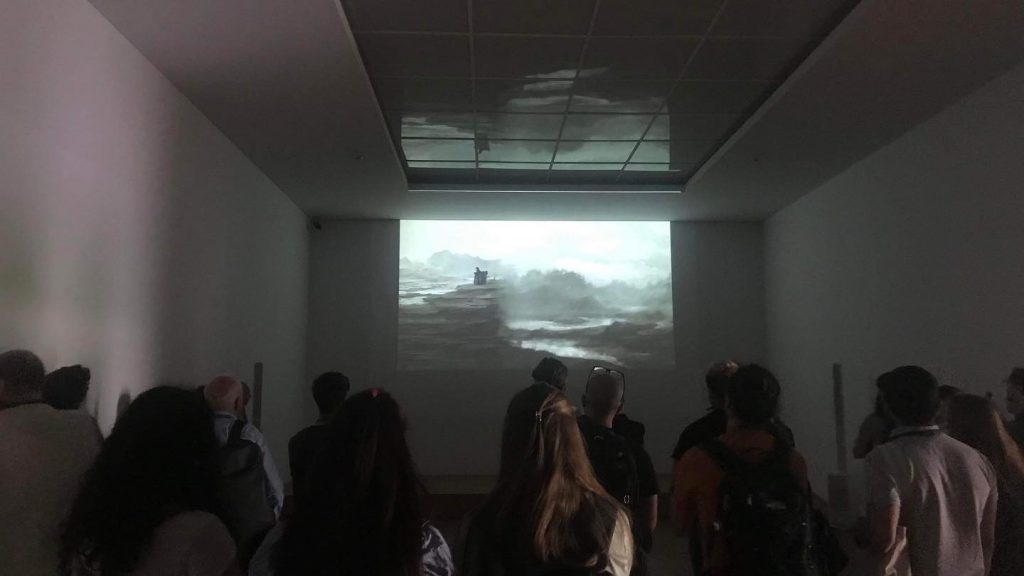
I digitally connected photographs from the aerial archive to black and white photographs of women wearing historic Icelandic clothing. Merging these strange and beautiful images together, creating a hybrid human-nature landscape. This work points out a view that we are connected to the mountains, to the volcanos, and to the glaciers. It also looks to the living folklore of Iceland, in which belief in and respect of the hidden people permeates the Icelandic sense of nature and identity.
For my other moving image work, I mixed the Inuit throat singer Annie Aningmiuq’s song Evoking the Arctic Spirit with AI generated imagery bred from Greenland ice archive photographs. The indigenous cultural view is that humans are deeply connected with nature; the two are kin, equal and interdependent. AI doesn’t involve any notion of self. Therefore, using it in an artistic practice deconstructs the notion of the individual.
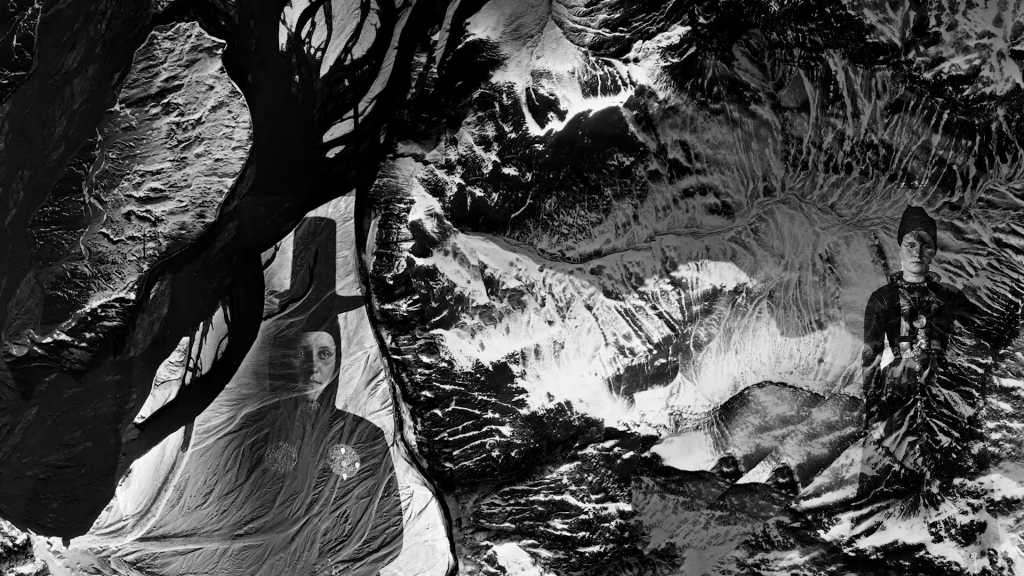
We are always wondering whether artificial machines have intelligence. Maybe instead we should be asking whether a plant or fungi have intelligence in their mutually beneficial interactions. In my work I ask how we can move away from hyper masculinity to develop natural non-extractive relationships to the cryosphere.
Pearl Jackson-Payen – A poet’s response
The poet places language beyond the reach of time: or, more accurately, the poet approaches language as if it were a place, an assembly point, where time has no finality, where time itself is encompassed and contained – John Berger, 1984.
While travelling through and in between the glacial-volcanic landscapes of Iceland, language evaded me. Slowly, over the following three years, I made sense of the profound unravelling landscapes. They moved deep within, they became me. Poetry eventually arrived. In offering ‘a place, an assembly point, where time has no finality, where time itself is encompassed and contained’, it was my only means of approaching nature.
The poems I showed at the Ice in a Sustainable Society Conference were part of this body of work. Short, haiku-like phrases; breathy, abstracted, distant, close. Lines and phrases came like dust, while walking through Reykjavík, or standing in the window at night. In their abstractions they spoke to my deep stirring emotion. The glacier within responding to the glacier without.
1.
In the beginning, a movement underground.
A stirring
A coiling
A becoming unstuck.
2.
Soft red visions slowly thickening and open.
Now, walking through Reykjavík, I remember.
A lupin flower, the edge of solidness, the bellowing walls.
My love from the mountain is close.
Soft red visions slowly thicken.
3.
Part of Iceland now, I am coated in the world.
Steaming slowly in hot springs,
I remembered the stars weep too, /And tears of space.
4.
Unravelling form, physical movement, breathing it.
Snow fills the window,
Snow fills the black amnesias of me.
5.
Volcanic ash smothering my feet,
To think of the edge of dust, the valley of the spiralling tear.
6.
O unmarked parts of space!
My heart drenched water yet again. A glimpse then of the angel. She!
